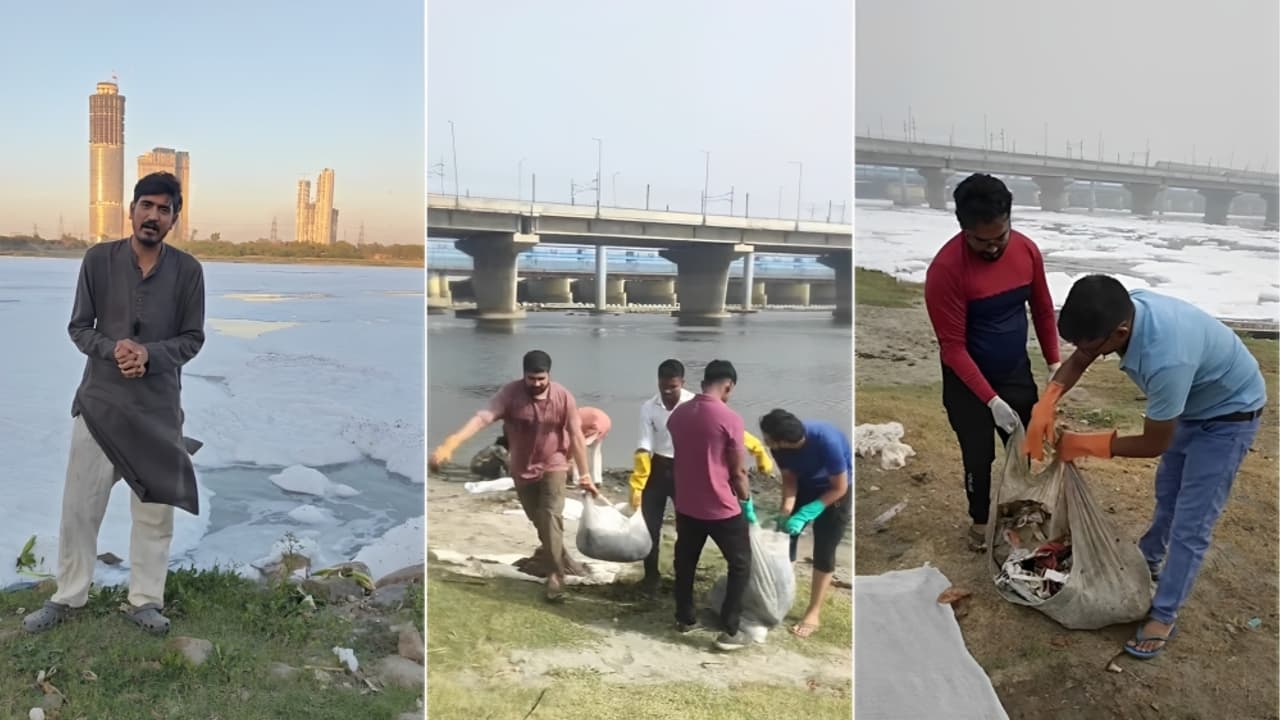Pankaj Kumar quit his corporate job to clean the Yamuna River. Through his group Earth Warriors, he leads clean-ups, inspects sewage plants, and pushes for reforms to stop untreated waste from polluting one of India’s most vital rivers.
Every Sunday morning, while most of the people in Delhi want to relax or just chill out, Pankaj Kumar heads to the Yamuna River at Kalindi Kunj Ghat. Wearing gloves and with quiet determination, he and his team from Earth Warriors collect heaps of plastic, garbage and debris from the river’s banks. Pankaj, once a corporate professional, left his job to focus completely on cleaning India’s rivers. For him, this is not just about removing waste, it is about bringing life back to one of the country’s most polluted rivers.
Why the Yamuna is so polluted
The Yamuna is over 1,300 km long, but in Delhi, a 22 km stretch between the Wazirabad Barrage and the New Okhla Barrage is responsible for almost 80% of the river’s pollution. There are many reasons for this. According to the Delhi Pollution Control Committee, 22 out of 35 sewage treatment plants in the city do not meet required standards. This means that untreated or poorly treated sewage is released into the river every day.
As of 2019, the Yamuna received about 800 million litres of mostly untreated sewage and another 44 million litres of industrial waste daily. Only around 35% of the sewage is treated before it enters the river. Pollution is made worse by low water flow, especially in the dry season. Experts say the river needs at least 23,000 litres per second released from the Hathni Kund Barrage during lean months to keep it healthy. Downstream, in places like Mathura and Prayagraj, pumping stations remove even more water for irrigation, leaving less fresh water to dilute the pollution.
Earth Warriors: more than clean-ups
Pankaj started Earth Warriors with a clear goal to clean rivers and also fix the systems that cause pollution. The team’s work is not limited to collecting waste. They inspect sewage treatment plants in 12 states, check if they meet safety standards, and file legal complaints when they don’t. They also meet civic officials to demand repairs and improvements. “Clean-ups are important, but we cannot clean faster than the river is being polluted. We must stop the waste from entering in the first place,” Pankaj says.
The numbers are alarming. India produces about 73 billion litres of sewage each day, but only 28% is treated. The rest flows untreated into rivers, lakes, and other water bodies. In Delhi, drains like Najafgarh and Shahdara bring huge amounts of sewage and industrial waste into the Yamuna. In Gurugram and other cities, dyeing factories and chemical units release toxic waste into drains without proper treatment. Even where treatment plants exist, many fail to meet basic environmental standards, adding to the problem.
Citizens as part of the solution
Despite the huge scale of the challenge, Pankaj believes in the power of citizens. Every week, volunteers join him on the riverbank. They may not be able to solve the problem overnight, but each clean-up sends a strong message that people care enough to act. “Many think pollution is only the government’s problem. But we are all responsible. Every piece of plastic or waste we throw away can end up in the river,” Pankaj says. The clean-up drives also inspire others to get involved. Some schools and colleges have sent students to join the efforts. Local residents who see the volunteers in action often come forward to help.
The Yamuna is a lifeline for millions. It provides water for drinking, farming, and industry. Yet, decades of neglect have pushed it towards crisis. Pankaj’s work is a reminder that reversing the damage is possible but it will take joint action from citizens, industries, and governments. It will mean fixing faulty sewage treatment plants, stopping untreated waste from entering drains, and ensuring enough fresh water flows through the river to keep it alive. Until then, every Sunday, Pankaj and his Earth Warriors will keep showing up, one bag of trash at a time, proving that change starts with those willing to act.
